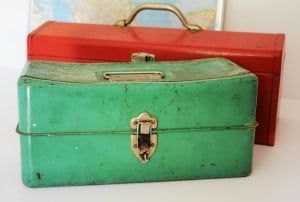The Tools That Every Small Business Should Have In Their Marketing Toolbox

You will naturally succeed in attracting new clients and buyers, as well as bringing in and sustaining new business
if you are ready and equipped with a good collection of marketing tools and essentials. If you invest some time in planning and implementing your marketing toolkit, you will realize that things happen much more organically, and that’s much more sustainable than artificially inflated business. Here are a few tools that we believe every small business should have in its marketing toolbox.
A clear budget and a plan
Having a strong marketing strategy in place will help you expand your company from strength to strength. It doesn’t have to be hundreds of pages long, but it should be straightforward and succinct, spelling out what you want to do, how you intend to do it, and when you want to reach realistic targets. You can even use deep learning for marketing , which uses customer data to create a tailored marketing strategy for your business. Every brand is different, which means that marketing doesn’t work with a “one size fits all” approach. By using AI marketing systems, you won’t be implementing a general strategy, but one just as unique as your business and your customer base.
Once your marketing strategy is prepared, i t is also important that you share your strategy and vision with your team if you have one so that you are all on the same page. You should also ensure that you have a fair budget to work with. If your budget is minimal and static, there is no point in making a list of wishful thinking and fantasies. Note that marketing is one of, if not the, most critical aspects of the industry.
Quality and sustainable marketing resources
Whether you use business cards, car decals, blogs and websites, direct mail leaflets – they must be of good quality and look professional, conveying your company values and branding. If you pride yourself on being a sustainable and environmentally conscious company – which all businesses should be striving to do, SMS messaging is also something to think about. You can build customer relationships successfully thro0ugh SMS and FireText is the perfect company to help you. We are all glued to our phones these days, so it is one way to reach a large audience quickly without adding to the pile of paper. Branding should be consistent across them and accessible at all times – you never know when an excellent networking opportunity will present itself.
A clear elevator pitch
Throughout your business career, you will be asked repeatedly, ‘What do you do?’ Spending half an hour going into great detail about your company would most certainly bore the individual who has inquired. Instead, practice the elevator pitch. What would you say to this person if you were trapped in an elevator with them for a minute or less? Make it enjoyable, unforgettable, and interesting.
A great website
In today’s digital world, your website is likely to be the first thing people look for, so it is important that you give it the attention it needs. Use it to bring in new clients, but also to keep them coming back week after week, month after month, and to remind them why they want you to do business with in the first place. It will be many customers’ first point of contact with you, so keep it professional and respond to inquiries and technical problems as quickly as possible.


